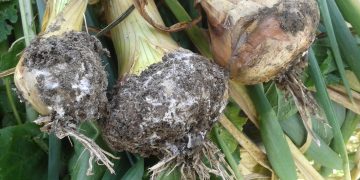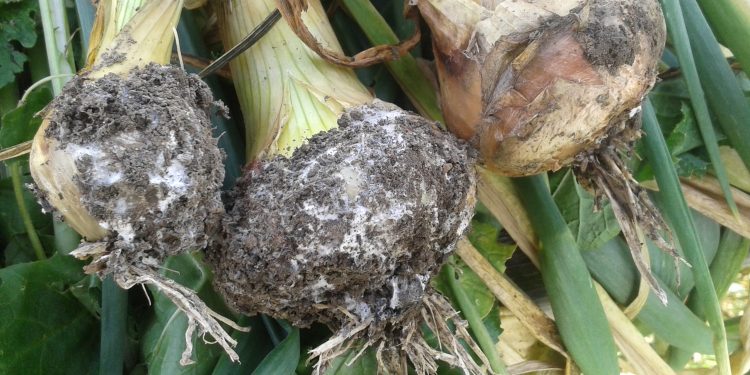Onions are an essential ingredient in many cuisines worldwide. They are not only popular for their flavor but also for their numerous health benefits. However, onions are susceptible to various diseases that can reduce their yield, quality, and storage capacity. As a farmer or gardener, understanding major onion diseases is crucial to prevent their occurrence and manage them effectively.
#OnionDiseases #CommonOnionDiseases #OnionHealth #OnionFarming #PlantDiseases #Fungicides #CropRotation
Here are some of the common onion diseases, their symptoms, and how to manage them:
- Downy mildew
Symptoms: Yellowish-green patches on the leaves that turn brownish-purple as the disease progresses. The leaves may also become distorted, and a white fluffy growth may appear on the underside of the leaves.
Prevention and treatment: Plant resistant varieties, maintain proper spacing between the plants, avoid overhead irrigation, and practice crop rotation. Fungicides such as copper-based or phosphorus-based can also be used to manage the disease.
- Botrytis leaf blight
Symptoms: The disease starts as water-soaked lesions on the leaves, which later turn grayish-brown and dry out. The affected leaves may also twist and curl, and the bulbs may rot during storage.
Prevention and treatment: Plant resistant varieties, maintain proper ventilation and avoid high humidity levels. Fungicides such as chlorothalonil and mancozeb can also be used to manage the disease.
- Fusarium basal rot
Symptoms: The disease affects the basal plate of the onion, causing it to become soft, watery, and discolored. The roots may also rot, leading to wilting of the leaves.
Prevention and treatment: Plant resistant varieties, avoid planting in poorly drained soils, and practice crop rotation. Fungicides such as thiophanate-methyl and azoxystrobin can also be used to manage the disease.
- Onion smut
Symptoms: The disease appears as black, powdery masses on the leaves, stems, and bulbs. The infected bulbs may be stunted and deformed, and the leaves may become yellow and dry.
Prevention and treatment: Plant resistant varieties, avoid planting infected bulbs or in infected soils, and practice crop rotation. Fungicides such as copper-based can also be used to manage the disease.
In conclusion, preventing and managing major onion diseases requires a combination of measures such as planting resistant varieties, proper spacing and ventilation, crop rotation, and the use of fungicides. Early detection and prompt action are also crucial to prevent the spread of the diseases. By understanding and implementing these measures, farmers and gardeners can ensure a healthy onion crop with high yields and quality.
































